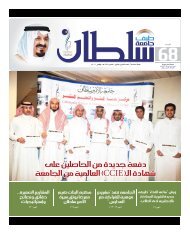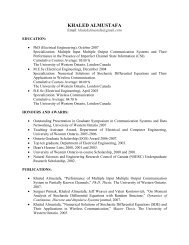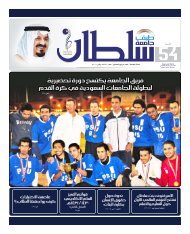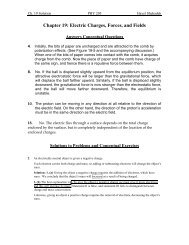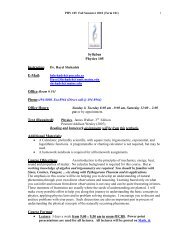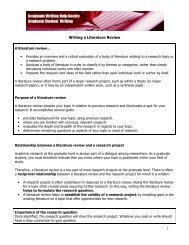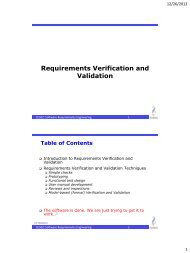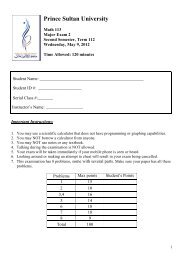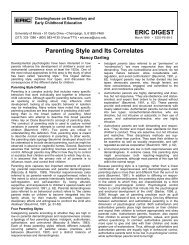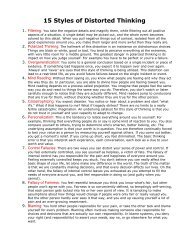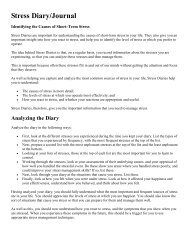Dr. Ahmed Sameh
Dr. Ahmed Sameh
Dr. Ahmed Sameh
You also want an ePaper? Increase the reach of your titles
YUMPU automatically turns print PDFs into web optimized ePapers that Google loves.
<strong>Dr</strong>. <strong>Ahmed</strong> <strong>Sameh</strong> Curriculum Vitae<br />
Deformable Modeling of the Spine”. During my sabbatical year, I had several meetings with my US-Egypt Joint<br />
project ($50,000) co-investigator in Iowa City. One graduate student had joined me in one of these visits. As a<br />
collaborative effort between us, a novel software system has been developed with the following distinct<br />
capabilities:<br />
Ability to reconstruct 3D anatomic geometry from CT scans. Various anomalies were demonstrated on the<br />
model.<br />
Ability to represent the model in a virtual reality environment where the spine model can be manipulated,<br />
disassembled, and made transparent in real time.<br />
Ability to closely examine the spine model using a virtual glove (also called the pinch glove), which allows<br />
surgeons to interact with the model and to identify anomalies and various degenerative conditions that would<br />
otherwise be unnoticeable (or less noticeable) using only CT cross-sections.<br />
Capability for obtaining real-time dynamic response as a virtual tool comes in contact with the model. This is<br />
based on a physics modeling approach for implementing the dynamic equations in the loop.<br />
At the Center for Computer Aided Design of the University of Iowa, a virtual reality laboratory was developed<br />
and built. The spine model floats in front of the user whereby the user interacts with the model in real-time,<br />
examining it closely, and identifying any anomalies. The group has secured a new $5 Million DRAPA funding<br />
for a “Digital Human” project. At AUC, three students have finished their M.Sc theses that are related to this<br />
project. We have a complete Spine model at AUC. And a number of research papers have been published out of<br />
this effort.<br />
Along with the Iowa group, we have given a number of invited lecture presentations at various forums<br />
(University of Michigan Center for Ergonomics, University of Missouri, and Hon Industries). I have extended<br />
the funding for this project for another calendar year.<br />
-The Florida Atlantic University Group: I came to know this research group during our participation in the IEEE<br />
CSIDC 2002, IEEE Computer Society International Design Competition 2002. We have received three free<br />
Bluetooth kits to be used in implementing our project. Two graduation projects made use of the kits. The IEEE<br />
Computer Society International Design Competition- CSIDC 2002 was held in Washington DC. During my<br />
sabbatical I visited the Florida Atlantic laboratory. We are currently collaborating in resolving several 3G<br />
wireless multimedia challenges including: (1) adaptive and scalable coding that will optimize digital media for<br />
mobile devices with limited processing power, (2) error resilience when delivering rich digital media over<br />
wireless networks at low and varying transmission speeds, (3) network access including rate control, and (4)<br />
multimedia and video security. The synergy between the 3G wireless Internet and multimedia promises to bring a<br />
tremendous explosion in application possibilities. At AUC, I had one graduate student finished his thesis work on<br />
wireless Ad-Hoc network related subject. Also a number of publications have been produced out of this<br />
collaboration.<br />
-The University of Connecticut Group: I have been working with this research group since 1998. We teamed<br />
together to build several clusters at AUC and UCONN. At AUC, we built a recycling cluster- an 8-nodes old<br />
486‟s, followed by a more advanced P4 8-nodes cluster, then an 8 SUN workstations Cluster. We also have built<br />
a Grid enabled Cluster and participated in the Grid Super Computing 2002 demonstration. Our Grid enabled<br />
Cluster was able to collaborate with the UCONN Cluster and share resources with it. Then in the Global Grid<br />
Forum testbed experiment, our Grid enable Cluster was the only one representing the Middle East and Africa.<br />
We are currently developing a very promising research direction that merges components, Grid, and Web<br />
Services. Two groups of AUC students have attended Cluster conferences and presented research results. I have<br />
been working very closely with the UCONN team to develop new programming model for Grid Services. During<br />
my sabbatical I have attended the Super Computing 2002 Grid experiment, and have visited UCONN at Storrs<br />
several times.<br />
-Got conference grants for a number of my students to attend and present papers at international<br />
workshops/conferences. Got an undergraduate student a grant to attend the Grid GGF5 and the HPDC11- July<br />
22-27, 2002 in Edinburgh. A Grid research group has been working with a similar group at The University of<br />
Connecticut for the fourth year now. A recent publication was a result of this collaborative effort. Also supported<br />
another graduate student to attend the MANET/NIST workshop about AODV workshop- June 8, 2002 in<br />
Page 34




